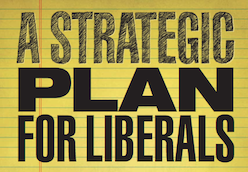This piece is part of the Prospect's series on progressives' strategy over the next 40 years. To read the introduction, click here.
A New America is rising. By 2050, people of color in the United States will comprise approximately 50 percent of the population. This shift in racial composition, however, is just one element in the nation's transformation-sexual orientation and gender are key concerns as well. The roles that women play will continue to increase, as will their numbers.
This New America has confronts distinct needs. Women are the harder hit by poverty than men, for instance; more than 20 million live below the poverty line. Women also have higher rates of single parenthood and single mothers are twice as likely to be poor than single fathers. Communities of color remain marginalized by economic inequality and huge wealth gaps. The median net worth of a white family is 20 times that of an African American family and 18 times that of a Hispanic family. Nor is the LGBT community is immune from economic inequality. Due to lack of universal access to the institution of marriage, protection from employment discrimination, and other civil rights and family benefits, LGBT communities are just as vulnerable to higher poverty rates than the general population.
These demographic and economic disparities in the U.S. population call for changes in how our country works. We can no longer mandate homogenous solutions to major social problems, as the solutions are as complex and diverse as the residents themselves.
The lack of investment in marginalized communities and their institutions – their schools and small businesses, their medical care and environmental safeguards - has generated a negative return for these communities and America as a whole. We must explicitly and heavily invest in the new America – and the new American.
For starters, we need to reinstate or solidify policies that eliminate barriers to choice, access and power. This includes affirmative action, which can level the playing field in education and business. We need protect the personal decisions of women and uphold Roe v. Wade and other legislative protections that save lives and preserve choice.
Guaranteeing all Americans the right to vote is critical. We need laws that automatically enable all residents to vote. We also must ensure that redistricting leads to a locally elected leadership truly reflective of the community it serves, and creates legislative bodies as diverse as the states and nation the legislators represent. It's important that we train new majority leaders. The success of Victory Fund and Emily's List are just two of the many programs that show an investment in campaigns and candidates can make a huge difference in diversifying our lawmakers.
We also should infuse civic participation at all levels of education and revisit our incentives for service and leadership. We need to partner with schools-from Kindergarten through college-to promote ethical and servant-based leadership.
On the economic front, we need to remedy the income inequality and wealth gaps from which historically marginalized communities suffer. Targeted solutions can be legislated, modeled on the success of the G.I. Bill. We also need to transform financial markets so they work for all. Greater access to credit though the use of microcredit and new methodologies for credit scoring offer the beginnings of realistic solutions for income inequality.
From an organizational perspective we need to develop sustainable business models for grassroots and locally based organizations that often may be more poorly funded than national organizations, but are also more authentically and aptly equipped to represent and champion the New America. To avoid a duplication and fragmentation of such efforts, social sector organizations should collaborate and consolidate more frequently-a goal that funders should foster. At the same time, funders also need to make small bets on prototype initiatives, particularly those focused on making systemic changes rather than just a short-term difference.
Since the 1700s America has prided itself on being a "melting pot." Today we need to move from seeking a blending that dilutes differences and instead promotes diversity and multiculturalism. In our global economy and multicultural world, embracing and understanding diversity will lead to increased innovation and success in the markets. Public institutions must foster and invest in diversity. Private institutions should be incentivized to invest in diversity, and we need to develop metrics and markers that track diversity from the boardroom to the sales floor.
Making the New America more competitive, economically viable and civically engaged will be no small feat, though there are any number of communities across the U.S. that have already undertaken these tasks. To ensure that the New America lives up to our egalitarian ideals, we need to make sure our financial, social and legislative investments are aligned to support diverse and inclusive leadership and engagement, both now and in the future.




